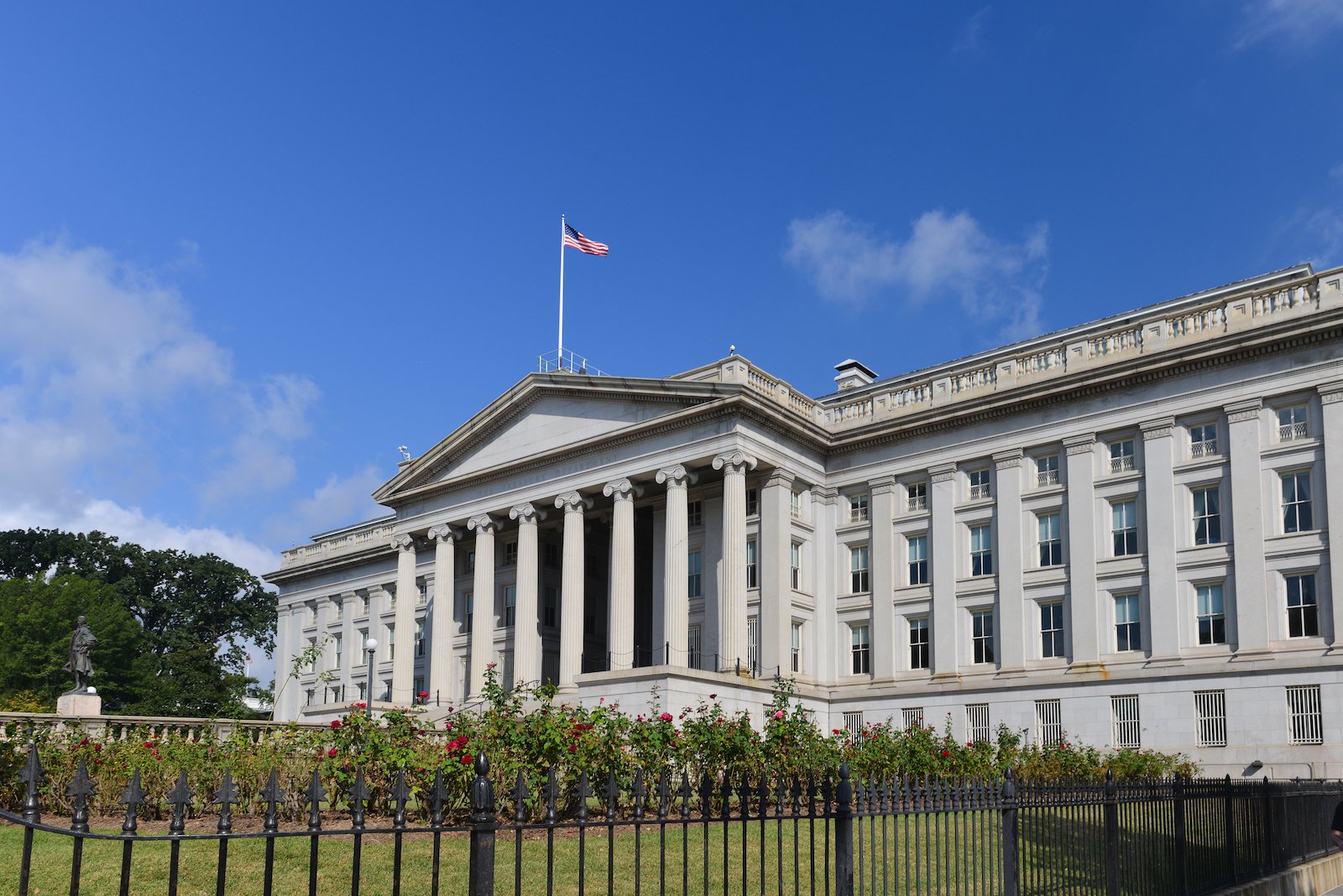Since World War II ended, the U.S. dollar has emerged as the dominant global currency. It is the primary reserve currency held by nations and the most frequently used medium for international trade and transactions worldwide. However, even a currency as powerful as the dollar is not invincible. While a total collapse of the dollar within the U.S. might seem improbable, several factors could create significant downward pressure.
We have researched various online forums to curate a list of 12 potential triggers that could weaken the dollar’s position and even lead to its collapse.
Surging National Debt

The U.S. national debt continues to grow at an alarming rate, amounting to $35.10 trillion as of July 2024. Without significant policy changes, the debt-to-GDP ratio can reach 190% by 2050 from 100% in 2024.
The ballooning debt increases the government’s borrowing costs, raising concerns about the long-term sustainability of U.S. fiscal policies. A debt crisis could erode confidence in the dollar, especially if investors believe the U.S. will struggle to meet its obligations.
De-dollarization Efforts by Major Economies

China and other countries are trying to reduce their reliance on the U.S. dollar in international trade. The BRICS group of nations (Brazil, Russia, India, China, and South Africa) discussed creating a new currency for trade among member countries, aiming to reduce the global dominance of the dollar. If successful, these efforts could diminish demand for the dollar globally, weakening its value.
Hyperinflation

Inflation rates have been rising, with the Consumer Price Index (CPI) reaching 314.54 in July 2024—setting a new all-time high in the country. While the Federal Reserve has taken steps to curb inflation using its policy tools, a failure to control it could lead to hyperinflation. Historical examples like Zimbabwe show that hyperinflation can destroy a currency’s value almost overnight.
Loss of Petrodollar Status

Fifty years ago, Saudi Arabia had abundant wealth but limited capacity to use it domestically. In 1974, the current account surplus exceeded 50% of GDP. The U.S. benefited as Saudi Arabia reinvested this surplus into American debt, strengthening the dollar.
However, recent developments suggest a change. Saudi Arabia is strengthening its relationship with China by signing a $7 billion currency swap deal, valid for three years. This agreement allows both countries’ central banks to hold each other’s currency, bypassing the U.S. dollar in transactions. If more oil-producing nations follow suit, the dollar could lose its petrodollar status, leading to a significant drop in demand.
Geopolitical Conflicts Involving the U.S.

Rising trade wars and geopolitical tensions, especially between the U.S. and China, could jeopardize the dollar’s dominance. Should conflicts worsen, China might sell its $1 trillion in U.S. Treasurys, impacting global markets. Countries could fast-track alternatives to dollar transactions, challenging their international role. Effective U.S. diplomacy will preserve the dollar’s status amid these shifts.
Cyberattacks on Financial Infrastructure

Cybersecurity threats have become increasingly concerning for the global financial system. A successful cyberattack on U.S. financial institutions or critical infrastructure could lead to widespread panic and a loss of confidence in the dollar. Ransomware attacks on financial institutions have significantly surged. In 2024, about 65% of global financial organizations reported such attacks, up from 64% in 2023 and 34% in 2021.
Failure of the Federal Reserve’s Monetary Policies

The Federal Reserve is crucial in maintaining the stability of the U.S. dollar. However, the dollar could lose value if it fails to control inflation or mishandles interest rates. The Federal Reserve spiked its key rate to 5.3%, the highest in 23 years, to combat inflation, which hit 9.1% in June 2022. This raises concerns about a potential recession, which could further strain the dollar.
A Major Recession

A severe economic downturn could erode confidence in the U.S. dollar. The 2008 financial crisis saw the dollar strengthen as a safe-haven currency. Still, a more severe or prolonged recession could have the opposite effect. There is a 51.82% chance of the United States entering another economic recession by May 2025, which could trigger a flight from the dollar.
Global Interest in CBDCs

Central banks are investigating the potential of digital currencies, with China’s digital yuan at the forefront. The U.S. Federal Reserve is similarly evaluating the feasibility of introducing a digital dollar. If other nations successfully advance their Central Bank Digital Currencies (CBDCs) while the U.S. falls behind, it could undermine the dollar’s supremacy in international finance. This shift could weaken the dollar’s global influence and reduce its value in the world economy.
A Rapid Decline in U.S. Economic Influence

The U.S. economy has been the largest in the world for decades, but its share of global GDP has been shrinking. Adjusted for purchasing power parity (PPP), the United States represented 15.56% of global GDP in 2023. This proportion is projected to drop to 14.72% by 2029, making it approximately one-seventh of the global total. If this trend continues, the dollar could lose its appeal as the world’s reserve currency.
Lack of Confidence in the U.S. Government

Political instability and a loss of faith in the U.S. government’s ability to manage its economy could lead to a dollar collapse. The 2023 debt ceiling crisis, where the U.S. narrowly avoided defaulting on its debt, resulted in decreased investor confidence in the U.S. A prolonged constitutional crisis could further erode trust in the U.S. dollar.
Waning Global Demand for U.S. Treasuries

Once a symbol of America’s economic power, U.S. Treasury bonds are now shunned, causing problems for taxpayers, investors, and financial markets alike. The oversupply of bonds and a lack of demand pose a severe threat to the U.S. economy. With the government attempting to cover its deficits by borrowing, buyers everywhere are pulling back. This growing disinterest could weaken the U.S. dollar and potentially trigger a collapse.


